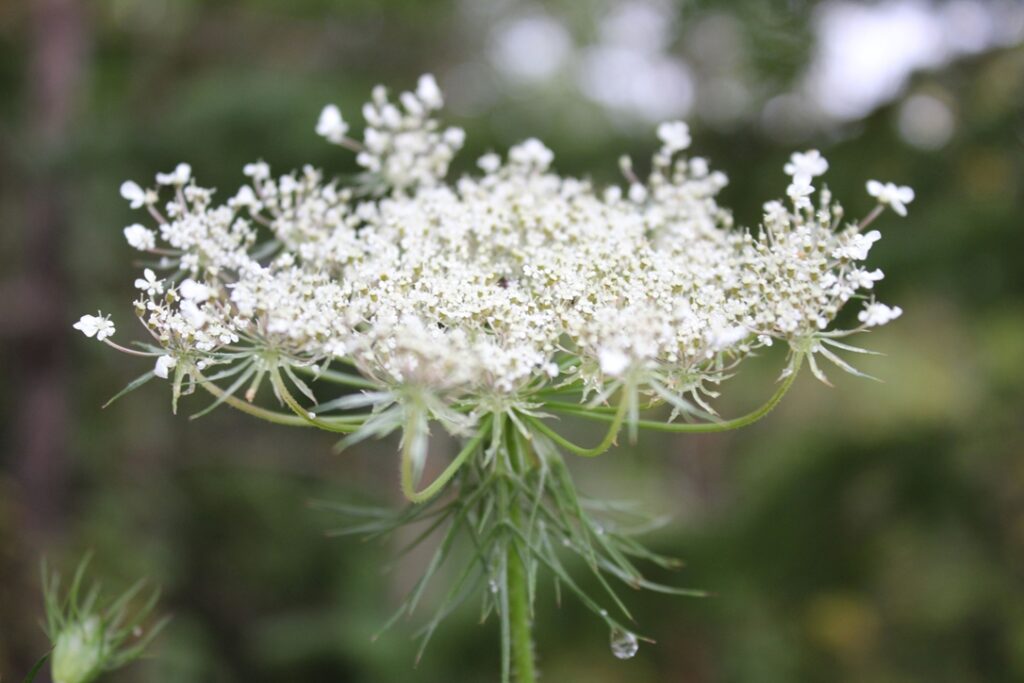
The glyphosate origin story: facts
Likely you have heard of glyphosate from many sources over many years. But what is a glyphosate fact and what is fiction? Read on for some science-based clarity.
Glyphosate was first synthesized in 1950. First, interest in the chemical was in its ability to bind metals. It’s metal-binding ability was found to inhibit a plant enzyme that is required for life. When glyphosate is applied, the plants cannot synthesize three amino acids. This causes plant death. Monsanto held the patent for glyphosate.
Glyphosate entered the market in 1974 under the tradename ‘Roundup’ as a broad-spectrum herbicide. Initially, glyphosate was used in specific weed control applications in farming and landscaping. Later, glyphosate-tolerant plants were introduced in the 1990s under the Monsanto tradename ‘Roundup Ready’. Subsequent use of this herbicide increased exponentially. Glyphosate is now the most widely used herbicide globally.
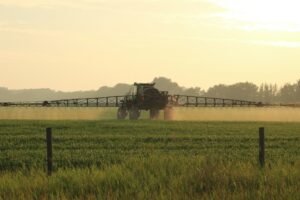
This was likely the mental image you had when you saw the subject of this article. Image by Kevin Casper.
How does it act?
Happily for humans, the enzyme inhibited by glyphosate is lacking in our cells. Plants die because they can’t synthesize three amino acids. Humans must consume these three amino acids because we already lack the enzyme.
Glyphosate is absorbed through the leaves. When plants are actively growing, cells are busy making proteins from amino acids. Glyphosate blocks the synthesis of three of these amino acids and cellular metabolism grinds to a halt. Plant death follows in one to three weeks.
In the environment, glyphosate tightly adheres to soil particles. Once it is released, it is rapidly degraded by soil bacteria. In fact, it is so rapidly degraded it is though that bacterially-produced degradation enzymes are always present in the soil. Degradation rates depend on temperature and how well the glyphosate adheres to soil particles. Typically, only 50% of the glyphosate remains in the soil after 47 days.
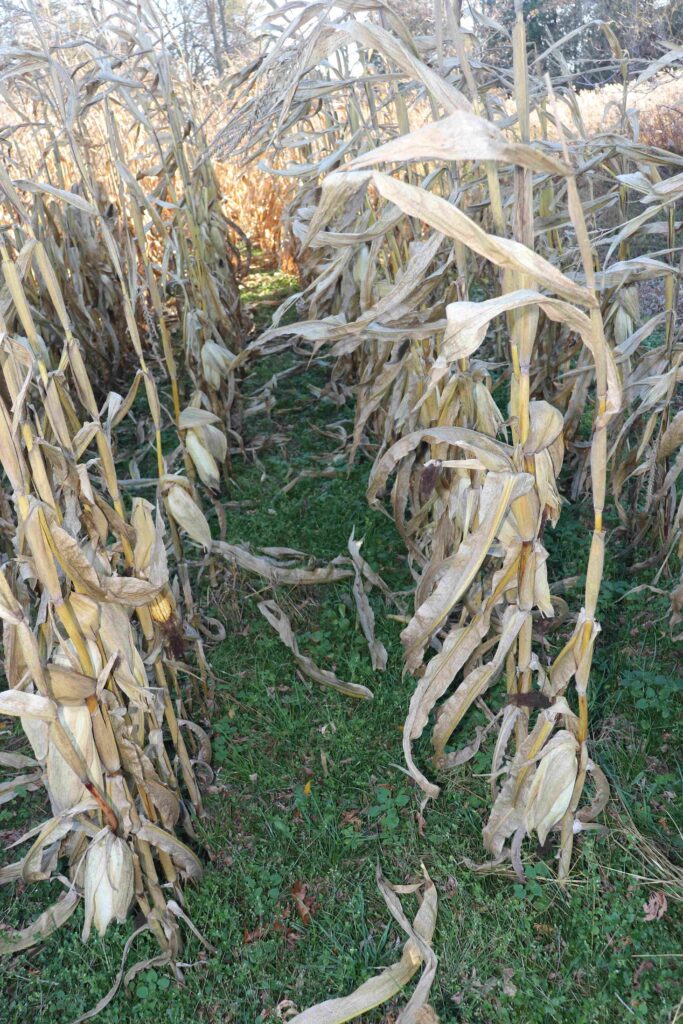
This corn was sprayed with glyphosate during the growing season. Months later, weeds are able to grow in the soil because the glyphosate is no longer able to inhibit plant growth.
Why is glyphosate on our radar? Maybe due to fiction.
The question is, why do you know about glyphosate? Why aren’t we talking about diquat (which has a half life of 1000 days), or atrazine and 2,4-D (both have clear negative effects on human health)?
You have probably heard of glyphosate because it is the most widely used herbicide in Canada and globally. The majority of agricultural land in southwestern Ontario is planted with corn, soybeans, and wheat. Corn and soybeans have widely-used glyphosate-tolerant varieties.
How do these varieties work? These resistant plants carry a bacterial gene that makes a different version of the enzyme. Whereas the plant enzyme is inhibited, the bacterial enzyme (in the plants) is not! In the field, these plants continue synthesizing the amino acids with this bacterial enzyme while all the other plants die due to glyphosate binding and inhibiting the amino acid synthesis enzyme. This allows the grower to apply glyphosate to the young crop to control weeds without injuring the crop. This is what has led to the exponential increase in global glyphosate use since the 1990s.
Glyphosate-resistant weeds
Since glyphosate is considered safe when used as directed by licensed growers (more on safety below), and it is broad-spectrum, meaning it kills all actively growing plants, it has been the herbicide of choice for decades. Unfortunately, this has led to the emergence of glyphosate-resistant weeds.
In Ontario, there are four weeds with known glyphosate resistance: giant and common ragweed, Canada fleabane and tall waterhemp. Of these weeds, all but Canada fleabane reproduce by cross-pollination. This is a significant issue because there is the potential for the glyphosate-resistance gene to be transferred by pollen over long distances to receptive female plants. This requires growers to manage their fields differently if they have glyphosate-resistant weeds growing. It is less of an issue for the home gardener, which is what you are here for, isn’t it?

This weed might be glyphosate resistant and its seed has blown on the wind to my garden from a nearby agricultural field.
Where might you encounter it in your daily life?
Most people have some level of concern about glyphosate.
Food
The Pest Management Regulatory Agency requires that pesticides be re-evaluated periodically to ensure the pesticides used do not pose large risks to human health or the environment. Glyphosate was re-evaluated in 2017 and it was determined to not pose a risk to human health or the environment when used according to label directions. To come to this decision, 89,000 pages of scientific studies were reviewed.
Other pest management authorities worldwide came to similar conclusions. This seems to be in contradiction to the World Health Organization’s hazard classification of glyphosate as “possibly carcinogenic to humans”. However, the WHO classification and Health Canada’s health risk assessment are not comparable. Health risk assessments account for the level of human exposure, which for Canadians, comes from the diet.
The Canadian Food Inspection Agency sets maximum residue limits (MRL) for pesticides, which is the legal maximum amount of a pesticide allowable on food. MRLs are a lower concentration of pesticide that would cause health effects. This ensures that foods are safe to consume. The CFIA tests foods for pesticide residues. The results of the testing are accessible from their website. A study done on almost 8000 Canadian retail products from 2015-2017, uncovered 99.4% compliant products (e.g. Glyphosate not detected in 58% of products, and in 42% it was detected below the MRL). The study concluded that the food we consume in Canada is safe in regards to glyphosate residues.
Garden
As a home gardener, you might be reading this article because you are planning to, or have used glyphosate in the past. The cosmetic use of pesticides in Ontario is banned. Only “low risk” pesticides are allowed for use in lawns and gardens and glyphosate is not one of them (website).
Confusingly, you can still walk into some retail stores and find glyphosate for sale under lock and key. By performing an online search at a national rural store, I found seven glyphosate products. So, you can still buy glyphosate and use it despite the fact that you are using it cosmetically (i.e. Your livelihood doesn’t depend on killing those weeds). What to do? Read on to see other methods of weed control.

These weeds are smothering my lettuce but I have many options for how to remove them besides chemicals.
How can I garden without glyphosate?
If you currently use glyphosate for broad-spectrum weed control, you may want alternatives. While there are a lot of natural herbicides available, many are ineffective. Some are dangerous despite being natural. An example is clove oil, which contains the carcinogen eugenol. Other popular chemical weed control options like strong vinegar solutions only kill the aboveground parts of the plant and let the roots live (for a great visual, see this experiment). Chemical weed controls whether natural or synthetic, have similar issues of being health hazards or ineffective, or worse, both!
So, what is the gardener to do when faced with a persistent weed problem? See this article for a great summary of weeds. There are two main categories of weed control that we haven’t mentioned: physical control and cultural control.
Physical control
When you weed, you want the result to be that weed never growing again. The surest way to that path is physically removing the weed. It’s so boring, I know, but it is so effective. Hoe technology hasn’t improved much over the last few millennia, perhaps reflecting how hoe design was perfected early due to its importance to humanity. Nevertheless, there are a few types to explore.
Draw hoes have blades at right angles to the shaft and are used by chopping into the ground and pulling the hoe towards you. These can also be used to cultivate the soil. Scuffle hoes scrape the surface of the soil, removing the shoots from the roots. Having a hoe with the proper shaft length and that is comfortable to use is important for enjoying this activity.
If the soil is wet or desirable plants are too close, hoeing isn’t an option. Then you might hand pull and possibly use the assistance of a mattock to lift out the root.
These methods are physically demanding but result in weeds being removed from your garden.
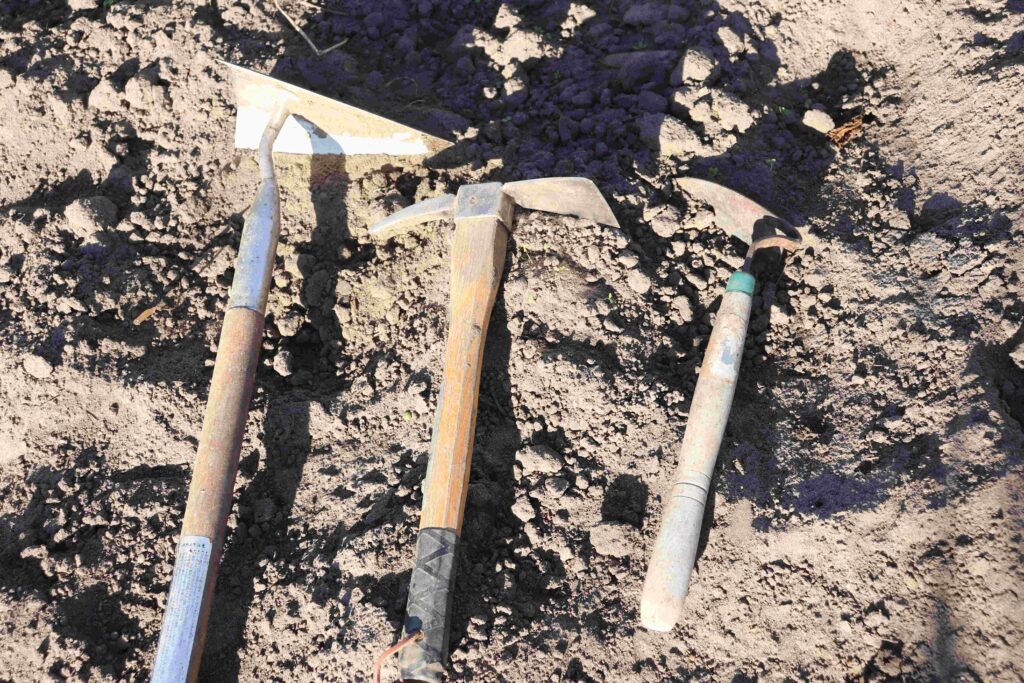
With the right hoe, removing weeds can be pleasurable. From left: trenching hoe (my all-purpose hoe), mattock, draw hoe.
Cultural control
Lastly, you can garden in a way that limits weeds from initially growing. Mulching shades the soil and prevents seeds from germinating. This is critical to preventing the weed seed bank in your soil from growing into weeds. If you have a seemingly out-of-control weed problem, consider just chopping back the plants to prevent flowering and seed production.
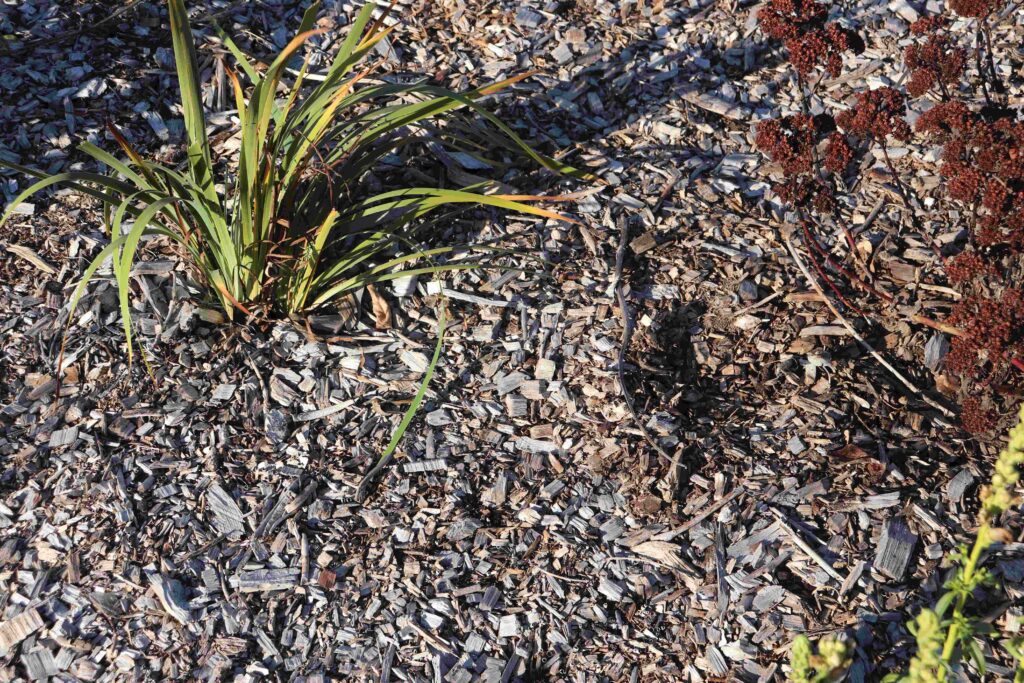
Mulched flowerbed suppresses most weeds, plus it has many other benefits.
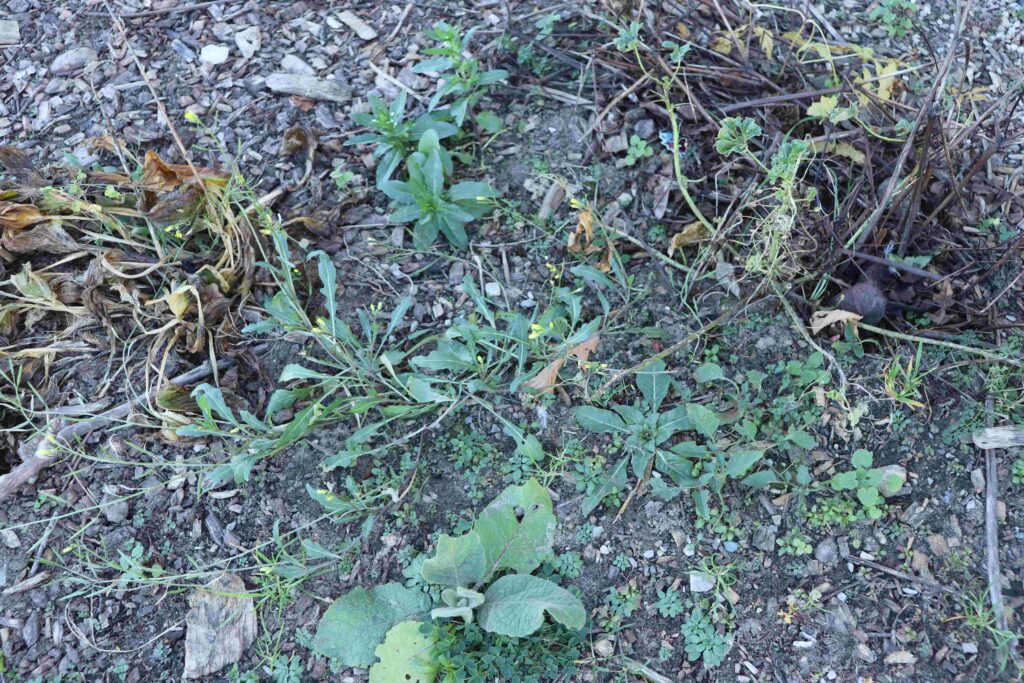
This flowerbed was unmulched all season and by fall, many weeds have grown.
Summary
Glyphosate is an agriculturally significant chemical. It is likely safe when used properly. However, you do not need to use this chemical in your garden. As a home gardener, you probably have a weed problem. There are many ways to attack weeds. Herbicides have limitations even if they are naturally derived. Chemical and physical control methods can help you keep your garden free of weeds.
References
Herbicide modes of action categories. OMAFRA. http://omafra.gov.on.ca/english/crops/facts/00-061.htm
Publication 75A. Guide to weed control. Field Crops. OMAFRA.
Crops in Canada. Statistics Canada. Table 32-10-0359-01 Estimated areas, yield, production, average farm price and total farm value of principal field crops, in metric and imperial units
GM Events with Glyphosate Tolerance
Molecular Basis for the herbicide resistance of Roundup Ready crops. PNAS 2006. 103: 13010
Glyphosate resistant weeds. Spreading through pollen? OMAFRA
Re-evaluation decision: glyphosate. Health Canada
Maximum Residue Limit Search. CFIA
Glyphosate’s illegal use is an open secret. The Sarnia Observer. 2021


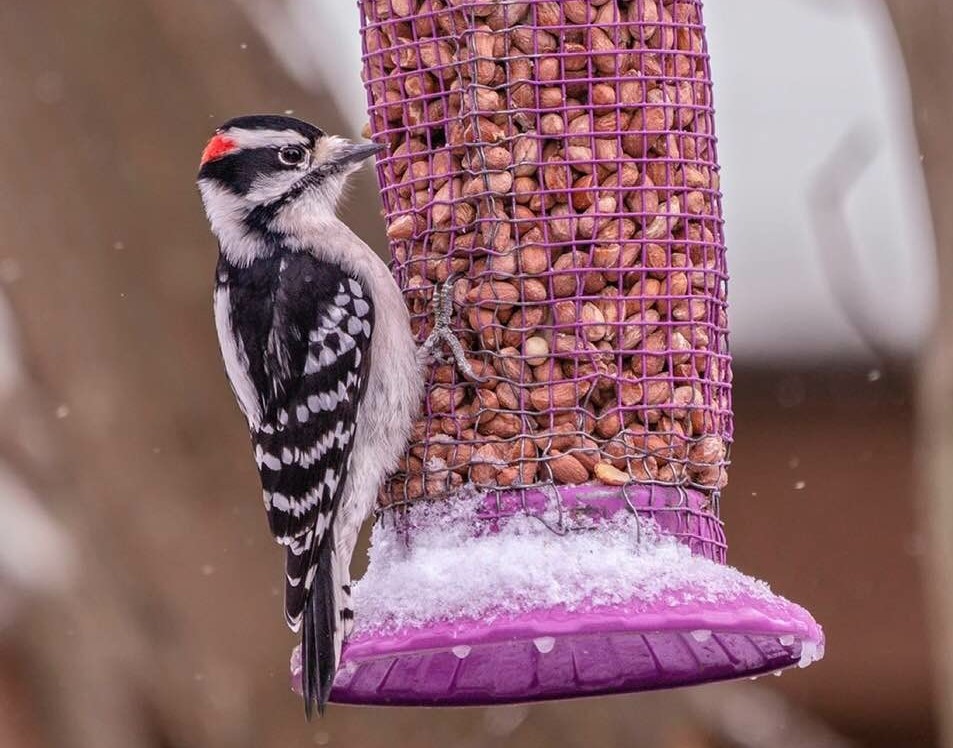


About The Author: Amy Turnbull
Scientist, researcher and professor at Fanshawe College. Avid grower of edibles in her home garden.
More posts by Amy Turnbull